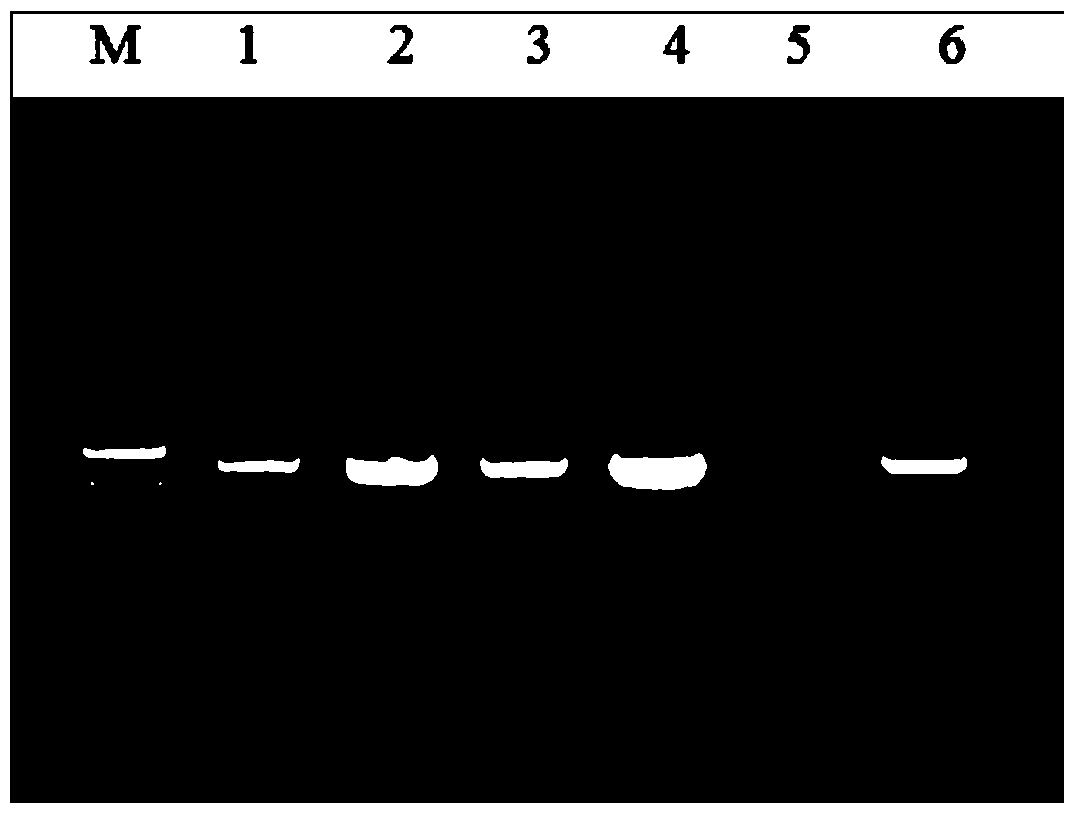Primers and kits for detecting human apoc3 gene mutation
A technology of APOC3-PF5 and APOC3-PR5, which is applied in the field of molecular biology, can solve the problems of sample contamination, increased detection cost, and increased detection steps, etc.
- Summary
- Abstract
- Description
- Claims
- Application Information
AI Technical Summary
Problems solved by technology
Method used
Image
Examples
Embodiment 1
[0032] Example 1: Whole blood direct PCR, PCR with blood extraction genomic DNA as template, and PCR with pUC19-APOC3 plasmid as template result comparison
[0033] 1. Design primers
[0034] APOC3 gene-specific primer sequences are as follows:
[0035]Forward primer: APOC3-PF 5'-GACCCAGCTAAGGTTCTAC-3', as shown in SEQ ID No.3, reverse primer: APOC3-PR 5'-AGGCTGAAGAGGCACAG-3', as shown in SEQ ID No.4. The corresponding PCR product size is 559bp. The primers were synthesized by Suzhou Jinweizhi Company.
[0036] 2. Extract blood genomic DNA
[0037] According to the instructions of Qiagen Blood DNA Extraction Kit (Product No. 158422), 200ul of freshly collected blood can obtain 1-5ug of human whole genome DNA, diluted to 100ng / ul for use, and stored at -20°C for a long time.
[0038] 3. Use the extracted plasmid containing wild-type APOC3 gene and mutant APOC3 gene as a template as a control for whole blood PCR: whole gene synthesis of wild-type APOC3 gene, sequence 1, and ...
Embodiment 2
[0056] Example 2: PCR of blood samples from different anticoagulation sources and different blood concentrations
[0057] 1. Collect whole blood
[0058]Fresh blood from the same person was collected and collected in EDTA anticoagulant tubes, sodium heparin anticoagulant tubes and sodium citrate anticoagulant tubes, each numbered as A, B, and C.
[0059] 2. Preparation of PCR reaction solution
[0060] Prepare the PCR reaction solution as follows:
[0061] Concentration 1: 2 μul whole blood was added to every 20 μul reaction solution, as shown in Table 3.
[0062] table 3
[0063] Element
template whole blood
2μl
2μl
2μl
2×Taq Master Mix
10μl
10μl
10μl
Primer APOC3-PF / APOC3-PR
1-5pMol
1-5pMol
1-5pMol
ddH2O
up to 20ul
up to 20ul
up to 20ul
[0064] Concentration 2: Add 4 μul whole blood for every 20 μul reaction solution, a...
Embodiment 3
[0076] Embodiment 3: the impact of different PCR reaction procedures on experimental results
[0077] Because, although the experimenters set the same PCR program on the PCR machine, the heating and cooling speeds of different PCR machines will be different, which will lead to differences in the reaction time of each temperature, thereby affecting the PCR results. The key step that affects PCR results is annealing, so we use a lattice gradient PCR instrument to verify different PCR reaction conditions, mainly the effect of annealing temperature on PCR results, to test the adaptability of this kit to different PCR instruments.
[0078] The freshly collected EDTA anticoagulated blood was prepared according to the method in Example 2 to prepare a PCR reaction solution.
[0079] 20μl reaction system, as shown in Table 7:
[0080] Table 7
[0081] Element
template whole blood
2μl
2×Taq Master Mix
10μl
Primer APOC3-PF / APOC3-P...
PUM
 Login to View More
Login to View More Abstract
Description
Claims
Application Information
 Login to View More
Login to View More - R&D
- Intellectual Property
- Life Sciences
- Materials
- Tech Scout
- Unparalleled Data Quality
- Higher Quality Content
- 60% Fewer Hallucinations
Browse by: Latest US Patents, China's latest patents, Technical Efficacy Thesaurus, Application Domain, Technology Topic, Popular Technical Reports.
© 2025 PatSnap. All rights reserved.Legal|Privacy policy|Modern Slavery Act Transparency Statement|Sitemap|About US| Contact US: help@patsnap.com



